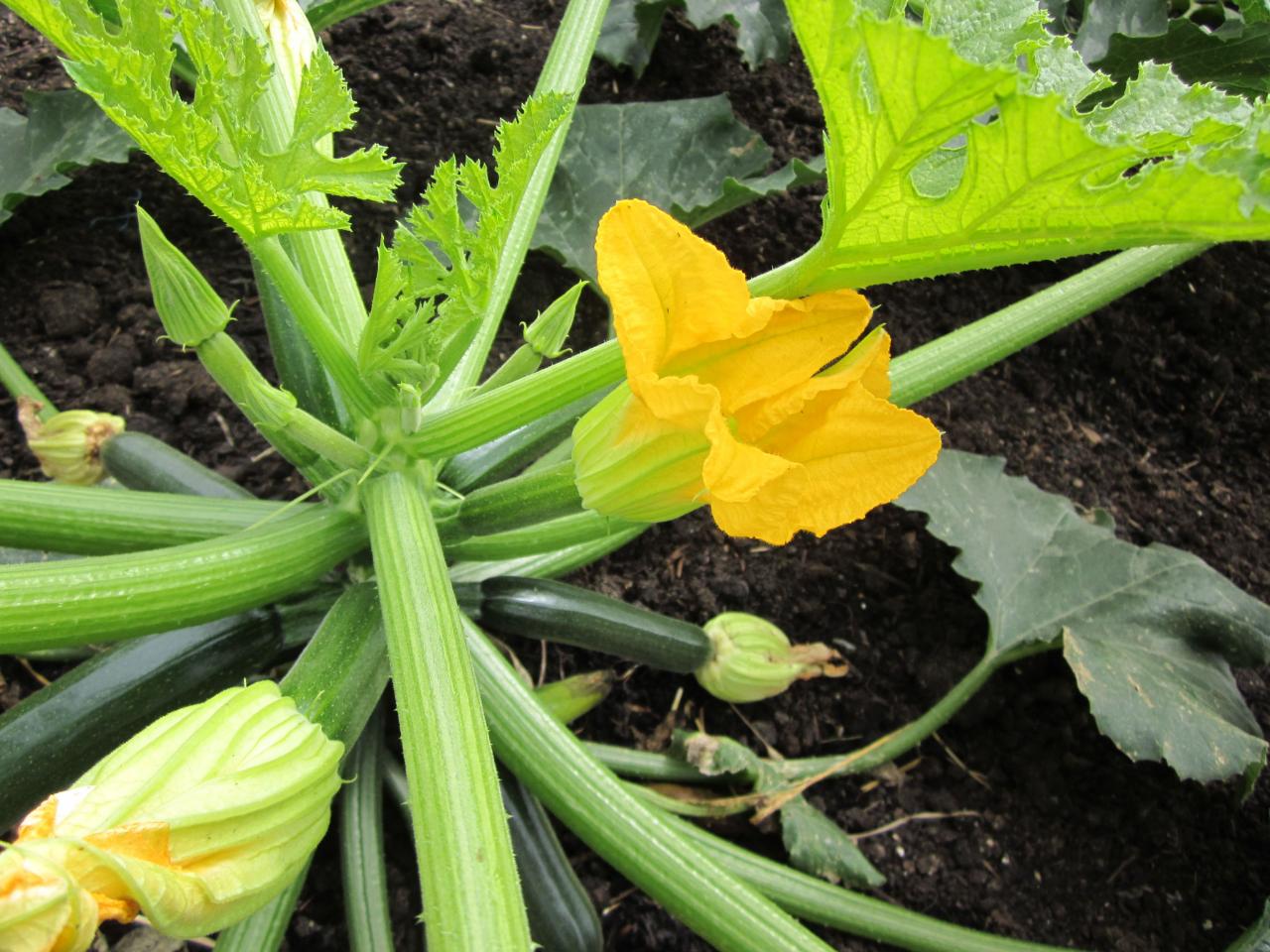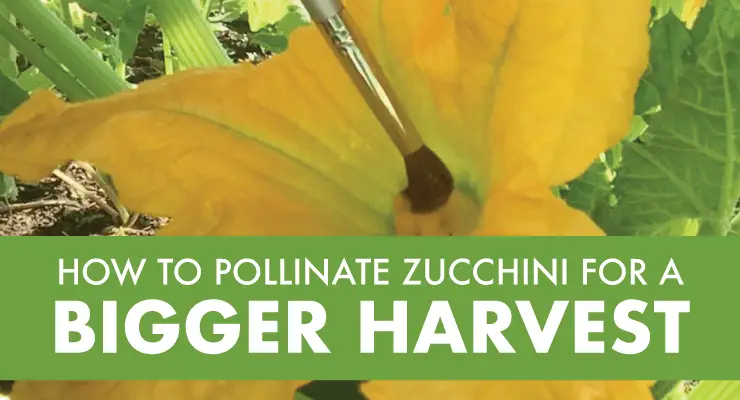Have you ever wondered how to ensure a bountiful harvest of zucchinis in your garden? Look no further! In this article, you will discover the simple yet effective technique of hand pollinating zucchinis. By taking matters into your own hands, literally, you can maximize the yield of this versatile and delicious vegetable. Whether you are a seasoned gardener or a beginner, this step-by-step guide will equip you with the knowledge to successfully hand pollinate zucchinis and reap the rewards of your labor. So, grab your gardening gloves and let’s get started!
Why hand pollinate zucchini?
Understanding the importance of hand pollination
Hand pollination is a vital practice for zucchini plants, especially in confined spaces or when there is a lack of sufficient natural pollinators in the area. Zucchini plants rely on the transfer of pollen from the male flowers to the female flowers in order to produce fruit. Without adequate pollination, zucchini plants may develop misshapen or small fruit, or even fail to produce fruit altogether. Hand pollination ensures a higher success rate and promotes healthier and more abundant zucchini harvests.
Benefits of hand pollination
Hand pollination has several benefits for zucchini plants. One major advantage is the ability to control and increase the pollination rate, which leads to more consistently shaped and larger fruit. It also enables you to ensure cross-pollination between different zucchini plants, promoting genetic diversity and enhancing the overall quality of the produce. Hand pollination can also be a useful technique when growing zucchini indoors or in greenhouses, where natural pollinators may not be present.
Identifying the male and female flowers
Distinguishing characteristics of male flowers
To successfully hand pollinate zucchini, it is essential to identify and distinguish between male and female flowers. Male flowers can be recognized by their long and slender stems, known as peduncles, which support the blooms. These flowers typically appear earlier than the female flowers and are often borne in clusters. Male zucchini flowers have a single, elongated stamen, which contains the pollen necessary for pollination. The absence of any fruit behind the flower is another characteristic of male zucchini flowers.
Distinguishing characteristics of female flowers
Female zucchini flowers can be identified by their shorter and thicker stems, which eventually develop into fruits. The base of the female flower contains the ovary, which will eventually become the zucchini. Unlike male flowers, female zucchini flowers often appear later in the season and are usually found as solitary blooms rather than clusters. The presence of a small, undeveloped zucchini behind the flower is a clear indication of a female flower.
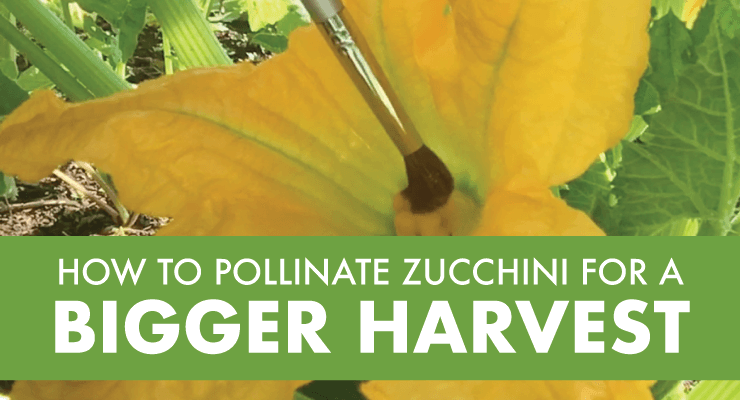
Collecting and preparing pollen
Choosing the right time to collect pollen
Timing is crucial when it comes to collecting pollen for hand pollination. The ideal time to gather pollen is in the morning when the flowers are fully open and the pollen is dry. Early morning is the best time because the flowers have had a chance to fully develop overnight. It is important to avoid collecting pollen when the flowers are wet or damp, as this can cause the pollen to clump together and become less effective for pollination.
Methods for collecting pollen
There are several effective methods for collecting pollen from male zucchini flowers. One simple technique involves gently shaking the male flower over a clean surface or container to release the pollen. Another method is to carefully remove the male flower from the plant and gently tap it against your hand or a clean surface to collect the pollen. Additionally, you can use a small brush, such as a fine artist’s paintbrush, to carefully brush against the stamen and collect the pollen.
Storing and preparing pollen
Once you have collected the pollen, it is important to store it properly to maintain its viability. Place the pollen in a clean, dry container and store it in a cool and dark location. It is recommended to use the collected pollen within a few days to ensure its freshness and effectiveness. If you need to store the pollen for longer periods, you can consider freezing it in a sealed container. When using frozen pollen, allow it to come to room temperature before use.
Hand pollination techniques
Using a paintbrush to transfer pollen
One popular method for hand pollinating zucchini is to use a paintbrush. Choose a small, fine artist’s paintbrush with soft bristles to avoid damaging the delicate flowers. Dip the brush gently into the collected pollen, making sure to take a small amount at a time. Carefully transfer the pollen to the center of a female flower, making gentle circular motions to ensure even distribution. Repeat this process for each female flower that requires pollination.
Transferring pollen with your fingers
If you prefer a more hands-on approach, you can also transfer pollen using your fingers. First, collect a small amount of pollen on your index finger by gently tapping it against the stamen of a male flower. Then, carefully transfer the pollen to the stigma located in the center of the female flower. Gently rub your finger against the stigma to ensure the pollen is effectively transferred. Be mindful not to apply too much pressure and damage the flower in the process.
Alternative methods for hand pollination
In addition to using a paintbrush or your fingers, there are alternative methods for hand pollination that can be attempted. Some gardeners have found success by using cotton swabs or even small handheld battery-operated vibrating tools to transfer pollen. These methods can be particularly useful when dealing with multiple plants or when time is limited. Experiment with different techniques to find the one that works best for you and your zucchini plants.
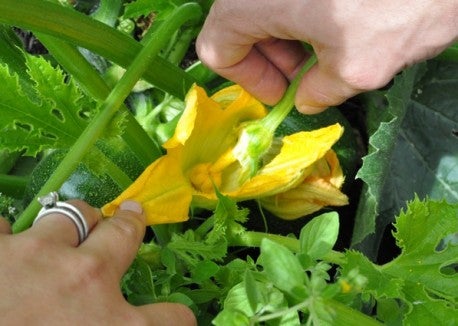
Optimizing environmental conditions for hand pollination
Understanding the importance of environmental conditions
Creating optimal environmental conditions is crucial for successful hand pollination of zucchini plants. Maintaining the appropriate temperature, humidity, and lighting levels ensures the overall health of the plants and enhances the effectiveness of hand pollination. By providing the right conditions, you are giving the flowers the best chance to develop into healthy and bountiful zucchinis.
Maintaining optimal temperature and humidity levels
Zucchini plants thrive in warm temperatures, preferably between 70-85°F (21-29°C), which encourages faster flower development and pollen viability. Additionally, keeping the humidity levels relatively moderate, around 60-70%, helps prevent excessive moisture that can inhibit pollination. If your growing environment is excessively dry, misting the plants with water can provide the necessary moisture for successful hand pollination.
Providing adequate lighting for successful pollination
Proper lighting is another important factor for hand pollinating zucchini plants. These plants require around 6-8 hours of direct sunlight each day to thrive and produce healthy flowers. Insufficient lighting can lead to weak or fewer flower productions, reducing the chances of successful hand pollination. If growing indoors or in a low-light environment, consider using artificial grow lights to supplement the natural sunlight and provide the required amount of light for optimal pollination.
Timing for hand pollination
Determining the appropriate time for hand pollination
Timing is essential when it comes to hand pollinating zucchini plants. It is best to begin hand pollination when the first female flowers appear, as this is when the plant is most receptive to pollination. Female flowers usually develop a few weeks after the appearance of male flowers. By hand pollinating early in the season, you can help kick-start the pollination process and ensure a successful harvest.
Signs that indicate the need for hand pollination
Several signs may indicate the need for hand pollination. If you notice a lack of pollinator activity in your garden, such as bees or other insects not visiting the flowers, it is a clear indication that hand pollination should be considered. Additionally, if you observe misshapen or small zucchinis forming, it could be a sign of poor pollination. By closely monitoring the development of your zucchini plants, you can identify when hand pollination is necessary to ensure a fruitful harvest.
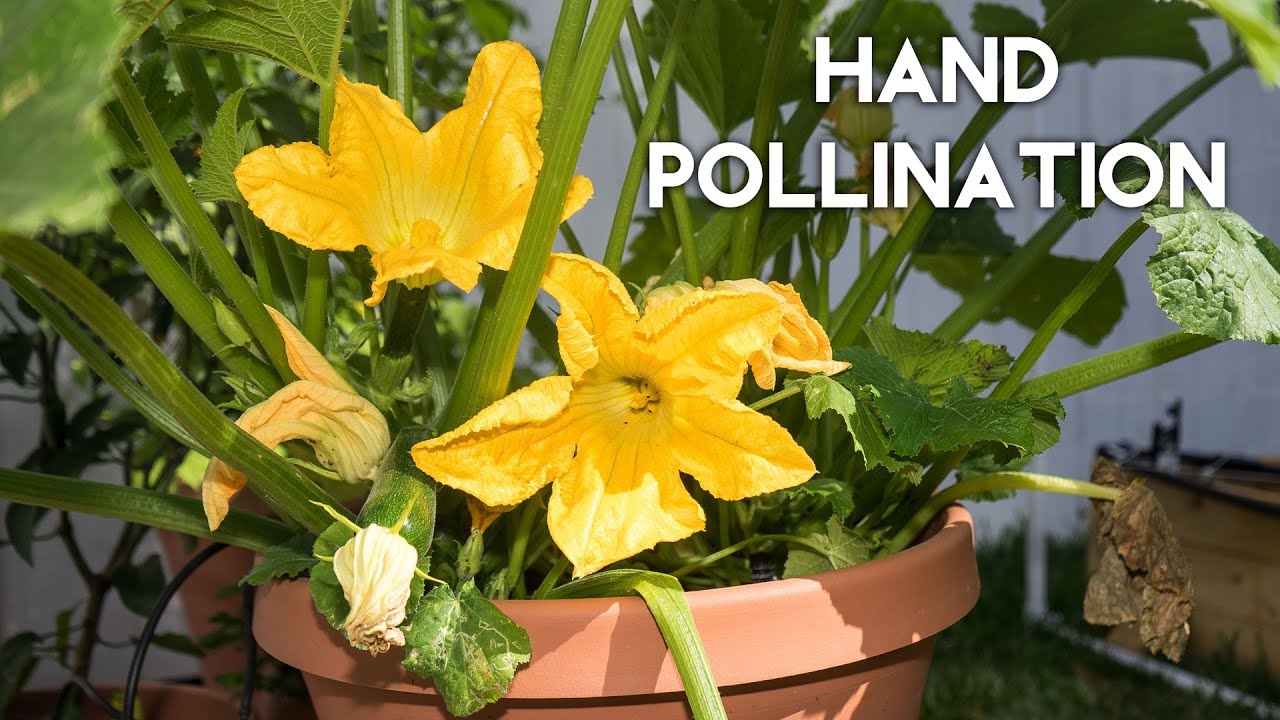
Step-by-step process of hand pollination
Identifying male and female flowers on the plant
Before starting the hand pollination process, it is essential to identify the male and female flowers on your zucchini plant. Locate the male flowers, which typically appear first in clusters, and the female flowers, which emerge later and are usually solitary. Take note of their distinguishing characteristics, such as the longer stem for male flowers and the small zucchini behind the female flowers.
Collecting and preparing the pollen
Using the chosen method for pollen collection, gather a sufficient amount of pollen from the male flowers. Avoid excessive shaking or tapping, as this can dislodge all the pollen at once, leading to wastage. Carefully transfer the pollen to a clean and dry container, ensuring minimal contact with any other materials or moisture.
Transferring pollen to the female flowers
Select a female flower that is ready for hand pollination. Gently brush or touch the stigma in the center of the female flower with the collected pollen. Make sure to distribute the pollen evenly across the stigma to maximize the chances of successful pollination. Repeat this process for each female flower that requires hand pollination, ensuring that all potential zucchinis have been pollinated.
Tips for successful hand pollination
Avoiding cross-pollination
To maintain the desired characteristics of your zucchini plants, it is important to prevent cross-pollination between different varieties. When hand pollinating, ensure that the pollen used comes from the same variety as the female flower intended for pollination. Take care to avoid accidental contact between different types of pollen to maintain the desired genetic traits.
Maintaining hygiene during the process
Hygiene plays a crucial role in successful hand pollination. Wash your hands thoroughly before collecting and handling the pollen to prevent any potential contamination. When using a brush or your fingers for pollen transfer, make sure they are clean and free from any foreign materials or residues that could interfere with the pollination process.
Ensuring thorough pollination
To achieve the best results, it is important to ensure thorough pollination of all the female flowers on your zucchini plants. Take the time to carefully inspect each flower, ensuring that the stigma is adequately covered with pollen. By paying attention to detail and being thorough in your pollination efforts, you increase the chances of a more fruitful harvest.
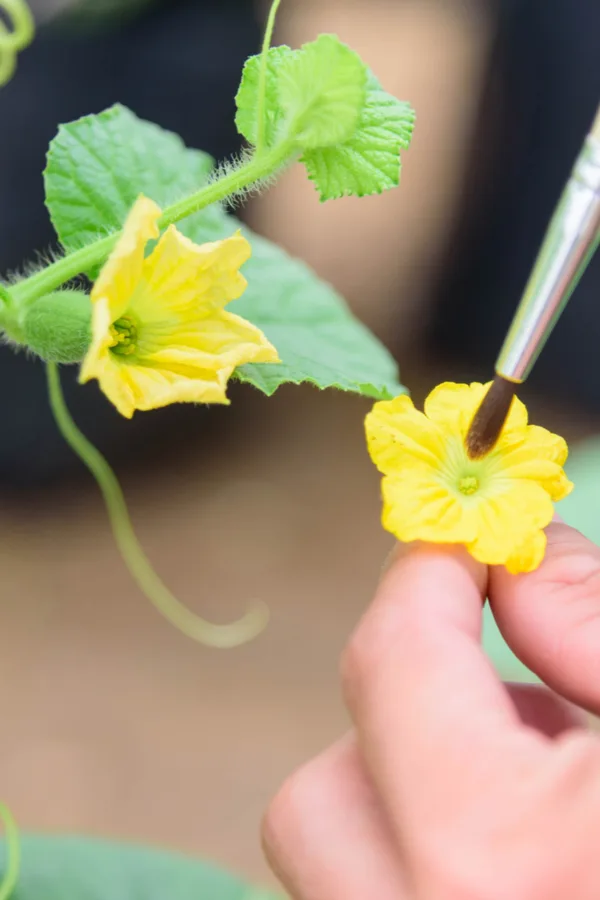
Common challenges in hand pollination
Dealing with low pollen viability
One common challenge in hand pollination is the issue of low pollen viability. Pollen can lose its potency over time or if exposed to unfavorable conditions such as excessive heat or moisture. To overcome this challenge, it is crucial to collect fresh pollen and store it correctly to maximize its viability. Additionally, by growing multiple zucchini plants, you increase the likelihood of having a sufficient amount of viable pollen for successful hand pollination.
Overcoming flower abortion
Flower abortion, where the female flowers wither or fall off before producing fruit, can be a challenge in zucchini plants. This can be caused by environmental factors, such as extreme temperatures, or lack of pollination. By hand pollinating, you can overcome the issue of inadequate pollination and reduce the chances of flower abortion. Ensuring optimal environmental conditions and following proper hand pollination techniques can greatly minimize flower abortion.
Preventing unwanted pests
Unwanted pests, such as aphids or cucumber beetles, can pose a threat to the success of hand pollination. These insects can damage or even destroy the delicate flowers, making hand pollination difficult or impossible. Regularly inspect your zucchini plants for any signs of pests and take appropriate measures to control and eliminate them. This can include using organic insecticides, practicing companion planting, or employing physical barriers to protect the plants.
Monitoring and evaluating pollination success
Tracking the progress of pollination
After completing the hand pollination process, it is important to monitor the progress of pollination on your zucchini plants. Observe the flowers closely, looking for signs of successful pollination, such as the swelling and development of the fruit behind the female flower. Regularly check the flowers to ensure they are developing properly and adjust your pollination efforts if needed.
Evaluating fruit development and seed production
As the zucchinis develop and mature, assess their overall quality and size. Evaluate whether the hand-pollinated fruits are larger and more consistent in shape compared to those that were not hand-pollinated. Additionally, by checking the fruits’ seed production, you can determine the success of the hand pollination process. Plump and abundant seeds indicate effective pollination, while underdeveloped or hollow seeds may suggest inadequate pollination.
Hand pollination is an invaluable technique for ensuring successful zucchini harvests. By understanding the importance of hand pollination, identifying male and female flowers, collecting and preparing pollen, employing hand pollination techniques, optimizing environmental conditions, timing the process appropriately, and implementing best practices, you can enhance the pollination process and reap the rewards of healthy and abundant zucchinis. With proper attention and care, you can become a skilled hand pollinator, mastering the art of facilitating the growth and development of your zucchini plants.
